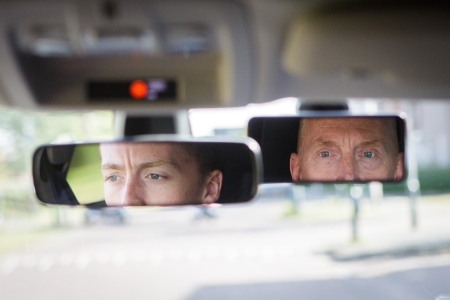Graduated licencing implies that prospective drivers first gain experience in safe conditions before being allowed to drive independently (and without restrictions). The more driving experience the candidates have, the more they are allowed to drive in less safe conditions. Several countries, including the United States, Canada, Australia and New-Zealand have this so-called ‘graduated driver licensing’ system.
Graduated licencing usually consist of three phases (for all forms of graduated licencing, candidates have to take a test to proceed to the next phase):
- The learner phase. In this phase, candidates can only drive while accompanied (also see the question What is accompanied driving (2toDrive) and how effective is it?). Supervisor and learner usually keep a logbook of the maneouvres accomplished and how they were mastered by the learner. Often, the number of kilometers travelled is also logged. The learner phase lasts six months to a year.
- The intermediate phase. During the intermediate phase, a candidate is allowed to drive independently, but only in conditions with low crash risks. This phase almost always implies a prohibition on driving under the influence of even the slightest amount of alcohol. Often a prohibition on driving in the dark and driving accompanied by peer passengers also applies.
- The provisional phase. During this phase, the novice driver is allowed to drive independently without restrictions, but stricter rules (for instance about alcohol use or heightened strictness in demerit points) apply for these novice drivers than for experienced drivers (also see the question What is the provisional licence and how effective is it?). Having committed a traffic offense, the provisional licence holder may also be demoted to the intermediate phase.
In the Netherlands, phases 1 and 3 of graduated licencing have been implemented. The learner phase is voluntary for adolescents who want to pass their driving tests before their eighteenth birthday. The provisional licence applies to all novice (also older) drivers.
In countries and states that have implemented full graduated licencing, the number of serious crashes with 16-year-old car drivers has strongly decreased. The crash involvement for 17-year-olds has also decreased, but to a lesser extend. The decrease in number of crashes amongst 18- and 19-year-olds was very limited [42]. In a graduated licensing system, 16-year-olds and partly the 17-year-olds drive while accompanied. For 18- and 19-year-olds usually the provisional licence applies, meaning they are allowed to drive without restrictions, but still a stricter demerit points system applies. These results imply that graduated licencing reduces crash risk, but mostly because of less exposure to hazardous conditions rather than (much) improved driving competence.
